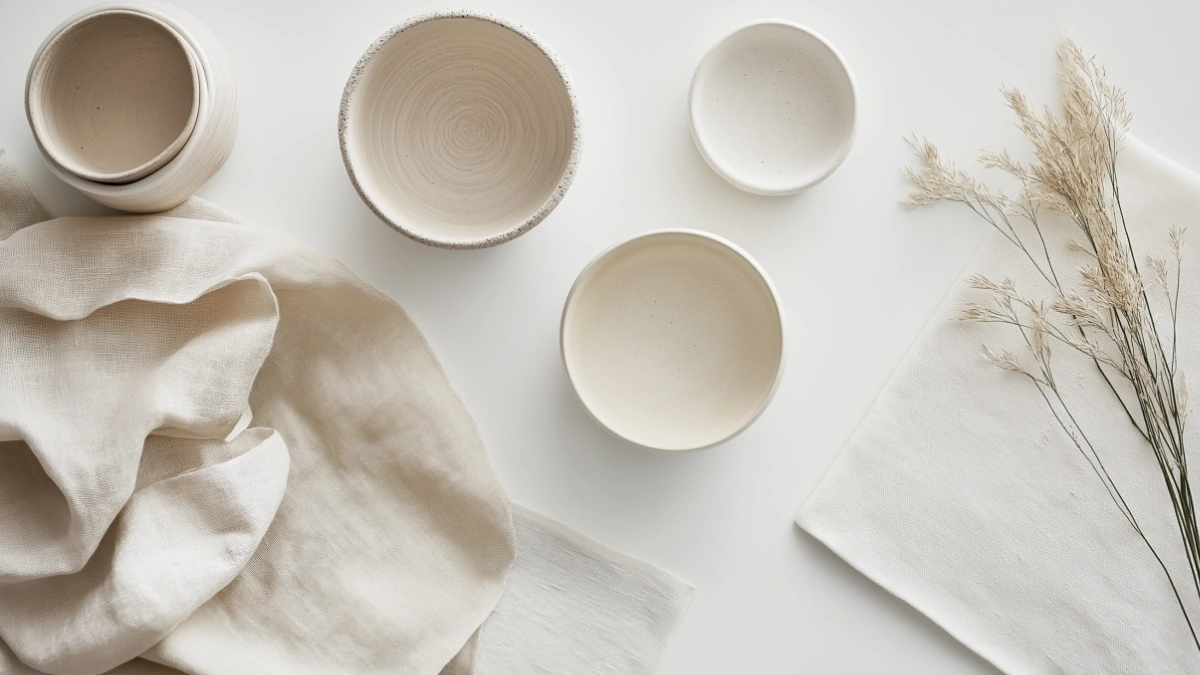Minimalist Living Room Ideas for a Calm and Serene Aesthetic
Table of Contents
Do you ever feel overwhelmed just by looking at your living room? You’re not alone. According to a UCLA study, clutter in the home is directly linked to increased cortisol levels. In contrast, minimalist interiors—especially in the living room—have been proven to reduce stress and promote clarity.
Minimalist decor isn’t about removing personality; it’s about thoughtful curation. By focusing on clean lines, quality materials, and intentional design, you can create a peaceful living space that promotes mental wellness and visual harmony.
In this guide, we’ll explore the foundations of minimalist living room decor, from calming color schemes to functional furniture choices and thoughtful styling techniques. Whether you’re refreshing your space or embracing minimalism for the first time, you’ll find practical ideas to inspire a serene aesthetic.
In-Depth Outline:
1. The Foundations of Minimalist Living Room Design
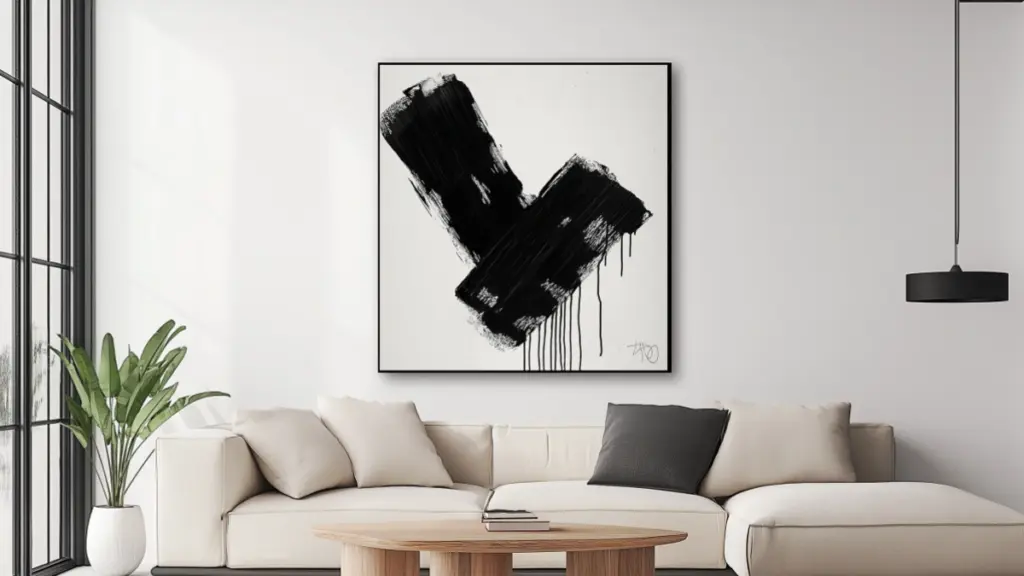
Less is More
- Limit furniture to essential, functional pieces.
- Choose items with multi-use features (e.g., storage ottomans).
Visual Calm
- Avoid visual noise by choosing low-profile silhouettes.
- Stick to one or two focal points, like a large art piece or statement chair.
Mindful Curation
- Prioritize quality over quantity—opt for long-lasting, timeless pieces.
- Keep surfaces clean and accessories minimal.
2. Choosing the Right Color Palette for Serenity
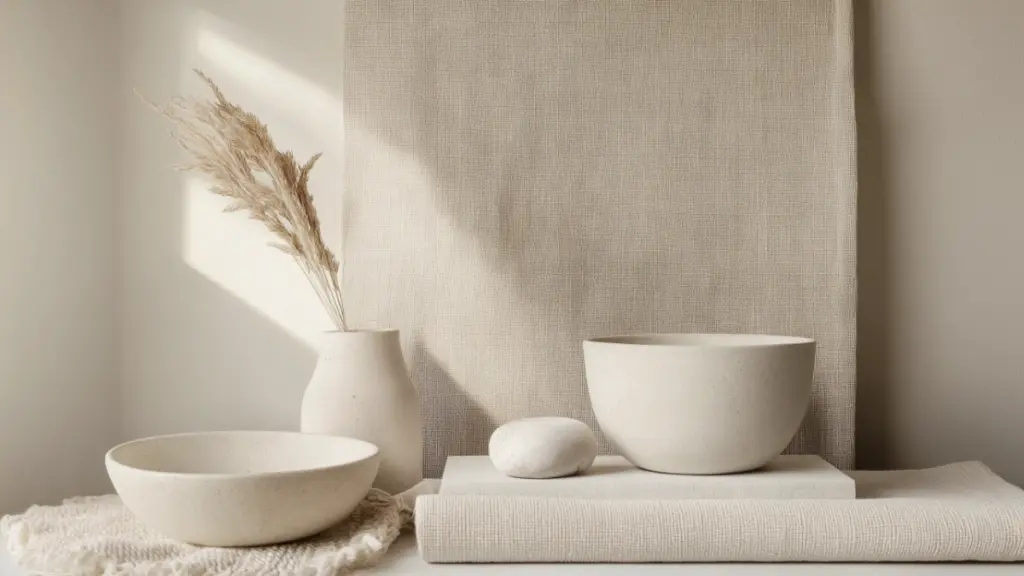
Neutral as a Base
- Use whites, soft grays, and beiges to create a clean foundation.
- Matte finishes enhance softness over glossy surfaces.
Accent with Intent
- Stick to one muted accent color like sage, sand, or charcoal.
- Add accents through textiles or a single statement decor piece.
Palette Planning Table
| Base Color | Accent Color | Best Use Case |
|---|---|---|
| White | Soft Sage | Walls + throw pillows |
| Beige | Charcoal | Sofa + metal decor |
| Light Gray | Warm Sand | Area rug + ceramic vases |
3. Furniture Selection: Form Meets Function
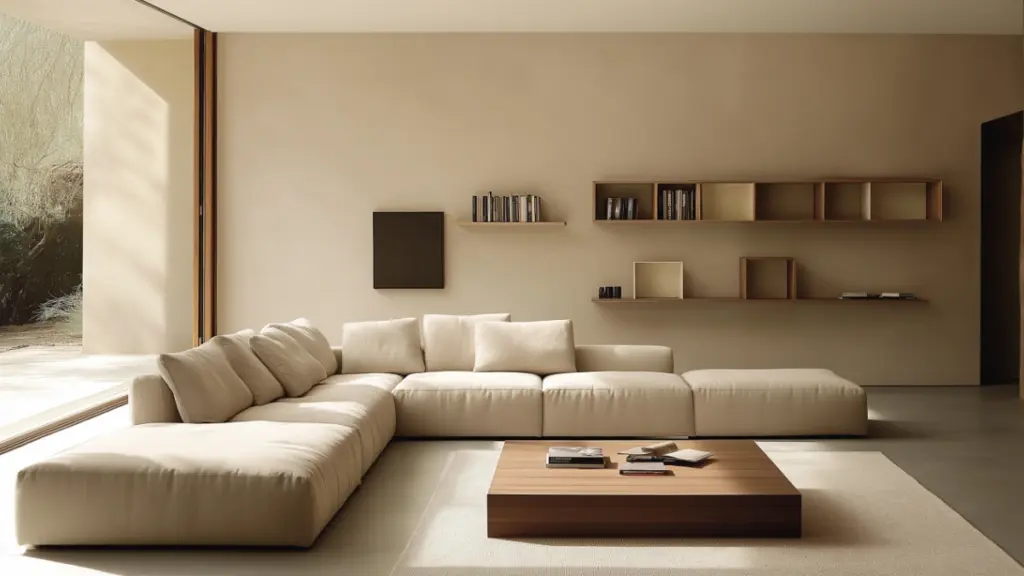
Prioritize Simplicity
- Opt for clean-lined sofas and armless chairs.
- Avoid bulky furniture with ornate designs.
Multi-Functional Pieces
- Use nesting tables, storage benches, or convertible seating.
- Built-in storage solutions maintain a clutter-free space.
Furniture Comparison Table
| Item | Minimalist Alternative | Added Benefit |
|---|---|---|
| Coffee Table | Low, open-frame wood table | Enhances visual openness |
| Bookshelves | Wall-mounted floating shelves | Saves floor space, sleek look |
| Recliners | Armless accent chairs | Light profile, easy to reposition |
4. Embracing Natural Light and Soft Illumination
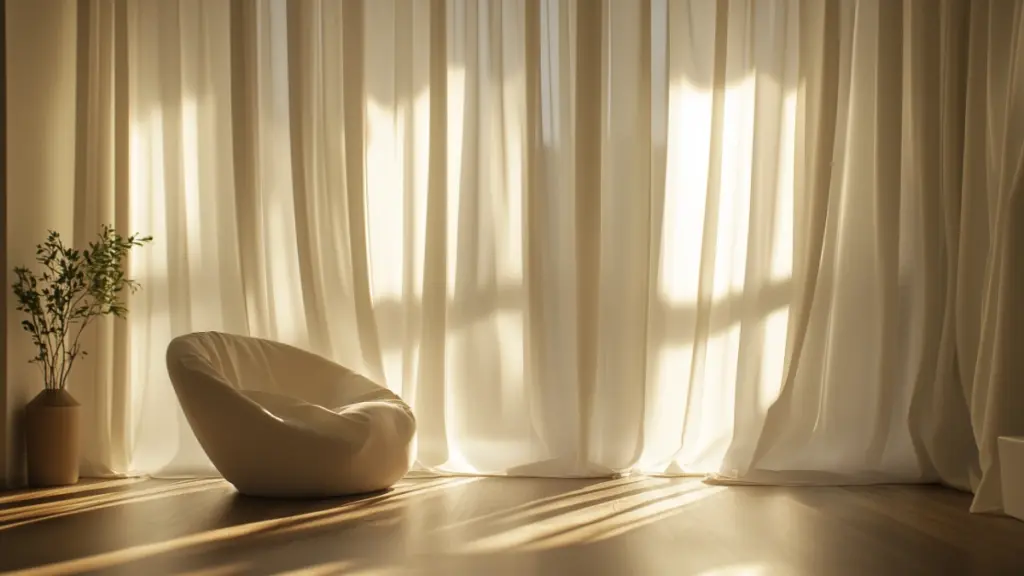
Window Treatments
- Choose sheer curtains or go curtain-free when privacy allows.
- Keep window frames clean and unembellished.
Artificial Light Layers
- Ambient: recessed ceiling lights or paper lanterns.
- Task: slim floor lamps near reading areas.
- Accent: warm LED strip lighting or wall-mounted fixtures.
Lighting Layer Table
| Lighting Type | Fixture Suggestion | Placement Tip |
|---|---|---|
| Ambient | Flush-mount LED lights | Even ceiling distribution |
| Task | Matte black arc floor lamp | Behind armchair or sofa |
| Accent | LED strip under shelving | Highlight built-ins or niches |
5. The Role of Texture in Minimalist Design
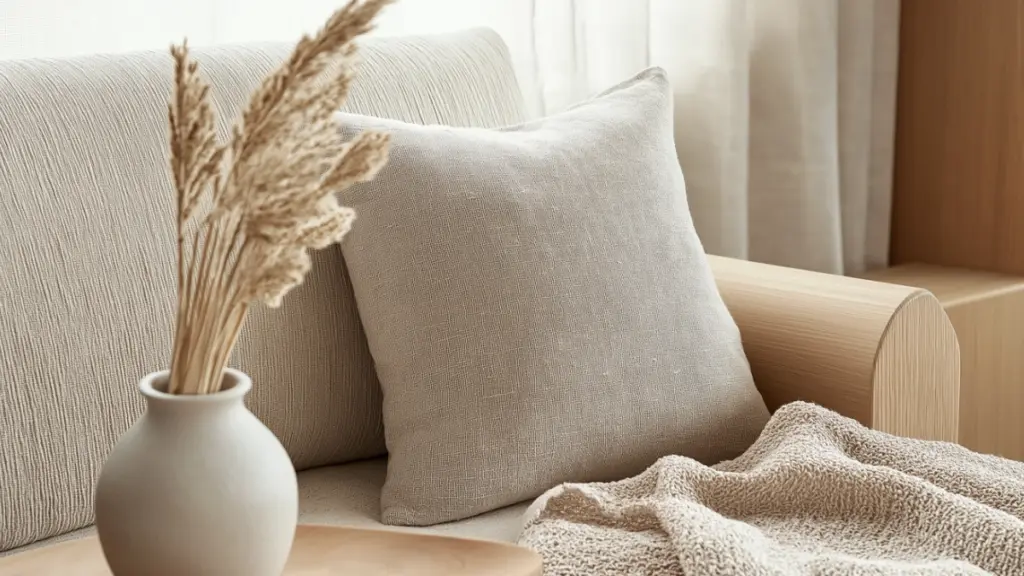
Layer Without Clutter
- Add visual interest through textiles instead of trinkets.
- Combine smooth and coarse materials: linen, wood, ceramic, and wool.
Textural Elements to Include
- Woven throws and pillows in neutral tones.
- Light wood furniture with visible grain.
- Hand-thrown pottery or matte vases.
Minimalist Texture Table
| Material | Texture Type | Suggested Use |
|---|---|---|
| Linen | Soft, relaxed | Throw pillows and curtains |
| Ceramic | Smooth, matte | Planters and trays |
| Wool | Soft, plush | Throws or area rugs |
| Oak Wood | Natural grain | Coffee tables and shelving |
6. Accessorizing Mindfully and Minimally
Keep it Intentional
- Display 1–3 curated pieces per surface.
- Think sculptural: handmade objects, negative space, raw finishes.
Wall Art and Decor
- Large-scale, abstract or monochrome art makes a statement.
- Floating frames or frameless canvases maintain a clean look.
Minimal Decor Dos and Don’ts Table
| Do | Don’t |
|---|---|
| Choose large, single artworks | Gallery walls with small frames |
| Use matte, natural finishes | Shiny or plastic accessories |
| Incorporate negative space | Fill every corner |
Detailed Content Expansion:
3. Furniture Selection: Form Meets Function
In minimalist design, every furniture piece should serve a purpose—ideally more than one. This means rethinking traditional bulk and opting for sleek, versatile items that align with a serene visual flow.
Start with your seating. Choose a low-profile sofa in a neutral hue, such as beige or soft gray, with clean lines and no excess tufting or ornamentation. Complement it with armless accent chairs or lightweight loungers, which make the space feel less crowded.
When selecting a coffee table, go for one with an open base, light wood finish, or even glass—these materials offer visual space. Nesting tables or compact side tables also work well if flexibility is important.
Storage is key in minimalist spaces. Rather than open shelving units filled with décor, use closed consoles or floating shelves to hide clutter and maintain balance. Items like ottomans with hidden storage or benches with lift-up seats combine function with minimal visual impact.
A good minimalist furniture setup not only saves space—it creates it. By choosing fewer, smarter pieces, your living room breathes better, allowing light, texture, and calm energy to flow effortlessly.
5. The Role of Texture in Minimalist Design
Texture is the unsung hero of minimalist design. In the absence of bold colors or heavy ornamentation, texture steps in to create visual interest and sensory depth.
Start by layering textiles thoughtfully. A linen or cotton throw over a structured sofa adds warmth without feeling heavy. Neutral-toned pillows in boucle or wool add softness and dimension while remaining consistent with your serene aesthetic.
Incorporate organic materials like lightly stained oak, ash wood, or bamboo. Their visible grain and matte finishes feel grounded and natural—key to evoking calm.
Then move into decorative elements. Use handmade ceramics in off-white or beige glazes. A textured clay vase on a shelf or a matte stone bowl on a console table brings intentional imperfection, a signature of minimalist styling.
Avoid mixing too many textures—choose 3 to 4 harmonious elements and repeat them throughout the space to build cohesion. The end result is a layered but uncluttered look that feels sophisticated and serene.
Conclusion
Minimalist living room decor is more than a design style—it’s a lifestyle choice rooted in clarity, calm, and intention. By streamlining your furniture, embracing natural light, choosing soothing palettes, and layering textures with care, you can create a space that truly feels like a sanctuary. Minimalism isn’t about doing without; it’s about doing with purpose—and that’s where the beauty lies.

